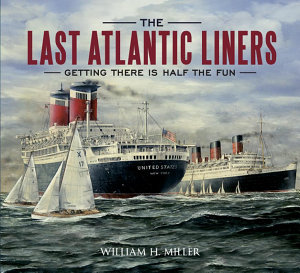The Last Atlantic Liners: Getting There is Half the Fun
Mar 2011 · Amberley Publishing Limited
Ebook
95
Pages
family_home
Eligible
info
reportRatings and reviews aren’t verified Learn More
About this ebook
It was a golden age of travel. The period from the end of the Second World War to the early 1960s saw some of the finest ocean liners ever built and, until the advent of the jet, the ships travelled full every trip, criss-crossing the Atlantic between the Old World and the New, carrying businessmen, tourists, emigrants and those who longed for a trip away. William H. Miller brings together a fabulous selection of images of the ships of the period, the great and the famous of ocean liner travel. From the grand Cunard Queens to the fastest and longest ships afloat, from the ships of state to smaller vessels, from the tragedy of disaster to the triumph of record-breaking, he tells the story of this glittering age of travel, a time when 'Getting There was Half the Fun'. Of course, it was all to end with the advent of the Boeing 707, capable of crossing the Atlantic in hours rather than days, and the liner trade went into terminal decline. One by one, ships were sold or scrapped until there remained only one, the QE2. She retired in 2008, but not before being replaced by the Queen Mary 2, the world's largest ocean liner. Join Bill for a voyage back in time aboard The Last Atlantic Liners.
About the author
William H. Miller writes extensively on ocean liners, and is known as Mr Ocean Liner. He lives in New Jersey when he is not aboard a cruise ship lecturing about ocean liner history.
Rate this ebook
Tell us what you think.
Reading information
Smartphones and tablets
Install the Google Play Books app for Android and iPad/iPhone. It syncs automatically with your account and allows you to read online or offline wherever you are.
Laptops and computers
You can listen to audiobooks purchased on Google Play using your computer's web browser.
eReaders and other devices
To read on e-ink devices like Kobo eReaders, you'll need to download a file and transfer it to your device. Follow the detailed Help Center instructions to transfer the files to supported eReaders.







